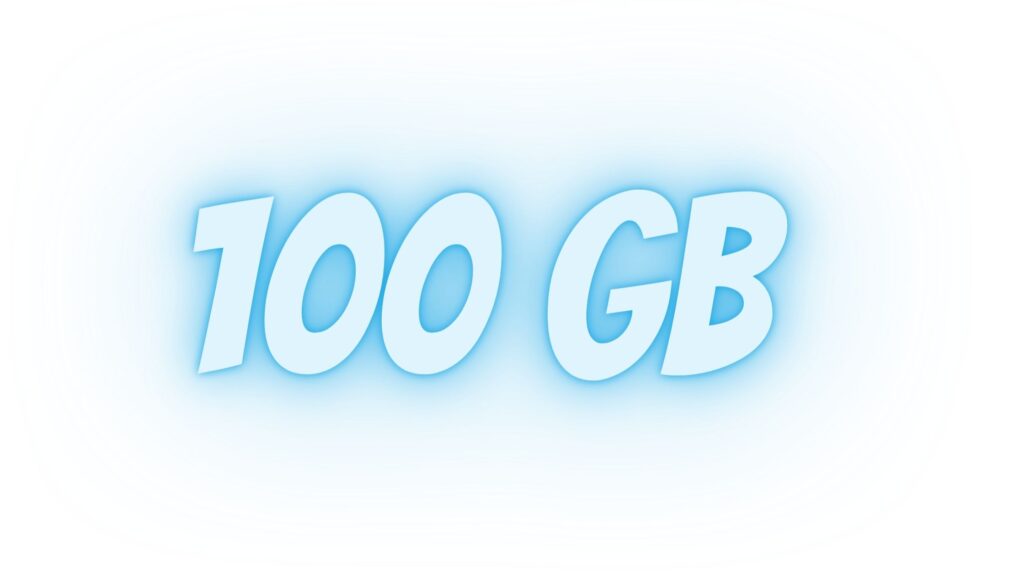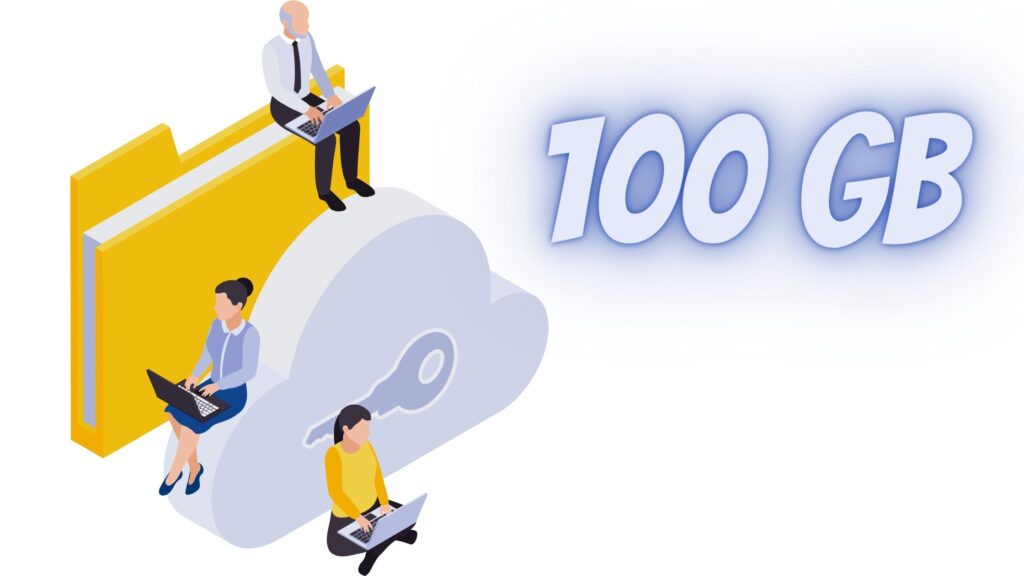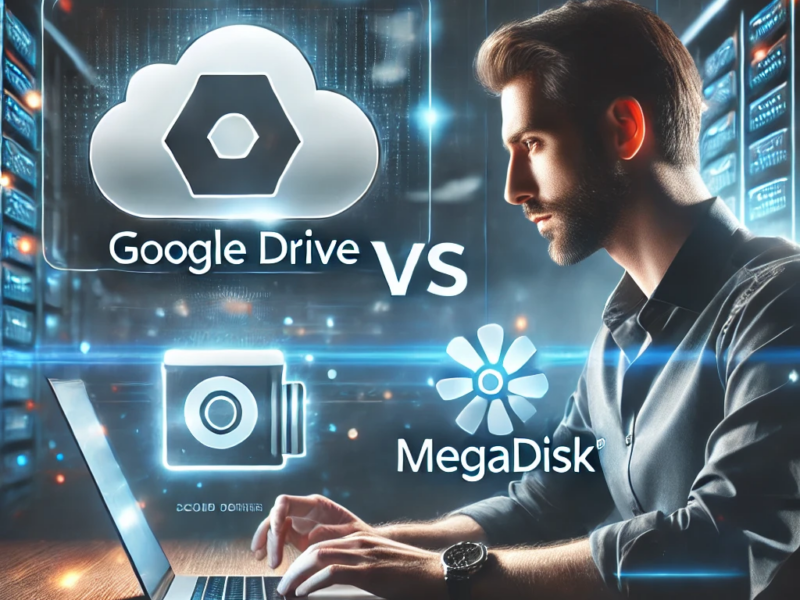Key Takeaways:
- 100 GB is a substantial amount of data, suitable for a broad range of online activities. With 100 GB of data, you could browse the internet for around 3,000 hours, stream about 500 hours of standard-definition videos, or listen to around 20,000 hours of music. Alternatively, it can handle sending 50,000 high-resolution photos or approximately 2 million emails.
- In terms of storage capacity, 100 GB of storage can hold around 25,000 high-resolution photos, 30,000 songs, or 150 hours of HD video. Alternatively, you could store tens of thousands of documents, PDFs, presentations, and spreadsheets.
Introduction
In this digital age, data has become the lifeblood of our daily existence. From streaming our favorite shows to staying connected with loved ones, we are constantly relying on data. But have you ever wondered how much is 100 GB of data and what it truly means in terms of our digital activities?
In this guide, we will break it down for you and help you understand just how much you can do with this amount of data.
What is a Gigabyte (GB)?
Before we get into the specifics of 100 GB, let’s first understand what a gigabyte is. A gigabyte is a unit of digital information storage, and it is equivalent to 1,000 megabytes (MB) or 1,000,000 kilobytes (KB). To put it simply, it’s a massive collection of ones and zeros that represent the digital content we consume daily.
The concept of a gigabyte dates back to the mid-20th century when scientists and engineers were working on developing storage systems for early computers. As technology advanced, the need for larger storage capacities grew, leading to the introduction of megabytes, gigabytes, terabytes, and beyond.
How much is 100 GB of Data? Real Life Usage

Now that we know the basics, let’s see what 100 GB of data can offer. This substantial amount of data opens up a world of possibilities for us. Here’s a breakdown of what you can do with it:
a. Streaming Content Galore
With 100 GB, you can binge-watch your favorite TV shows and movies to your heart’s content. On average, streaming a high-definition (HD) movie consumes around 3 GB of data, so you could watch over 30 HD movies with your 100 GB allowance.
Streaming platforms like Netflix, Amazon Prime Video, and Disney+ have revolutionized the way we consume content. The convenience of on-demand streaming has replaced traditional television viewing for many. Whether you’re into gripping dramas, thrilling action movies, or thought-provoking documentaries, 100 GB of data gives you the freedom to explore diverse genres.
b. Music to Your Ears
Are you a music enthusiast? With 100 GB, you can stream music for hours on end. On popular music platforms like Spotify, Apple Music, and YouTube Music, an hour of high-quality music streaming utilizes approximately 115 MB of data. With 100 GB, you could listen to over 870 hours of music without worrying about running out of data.
Music streaming services offer vast libraries with millions of songs, catering to every musical taste. Whether you prefer timeless classics or the latest chart-toppers, your 100 GB data can keep the melodies flowing endlessly.
c. Virtual Conferencing and Online Gaming
In the era of remote work and virtual meetings, video conferencing has become an essential part of our lives. A one-hour video call on platforms like Zoom consumes around 1.5 GB of data, so with 100 GB, you can participate in more than 66 video conferences.
Online gaming is another realm that has embraced data-driven experiences. From immersive role-playing games to adrenaline-pumping first-person shooters, the gaming world offers something for everyone. Online gaming typically uses around 40-300 MB of data per hour, depending on the game’s complexity. With 100 GB, you can embark on lengthy gaming sessions without fretting about your data running dry.
d. Social Media and Web Browsing
Social media platforms have become our virtual hangout spots. On average, browsing through social media for an hour consumes about 100 MB of data. With 100 GB, you can stay connected on social media for a mind-boggling 1,000 hours!
Platforms like Facebook, Instagram, Twitter, and LinkedIn keep us updated on the latest happenings in our friends’ and colleagues’ lives. Sharing moments, thoughts, and experiences has never been easier, thanks to the power of data.
Web browsing, too, is data-friendly, with an average usage of 60 MB per hour. So, you can surf the web for over 1,600 hours with your 100 GB allowance. Whether you’re researching a topic, reading the news, or discovering new interests, the vast expanse of the internet is at your fingertips.
How much is 100 GB of Data in Terms of Storage?
If you are looking for some data storage options and wondering how much 100 GB of storage is? here is what you need to know. 100 GB of storage is equivalent to 100 billion bytes of data. To put this into context, here are some common examples of data that can be stored within 100 GB:
- Photos: With an average photo size of 3-5 MB, you can store around 20,000 to 33,000 high-resolution photos.
- Videos: The exact number of videos that can be stored depends on their quality and length. For example, with videos of 720p resolution and an average size of 500 MB for a one-hour video, you can store approximately 200 hours of video content.
- Music: If an average song is around 5 MB, you can store roughly 20,000 songs in 100 GB of storage.
- Documents: Text-based documents are relatively small in size. You can store millions of pages of text-based documents in 100 GB.
- Apps and Software: The storage required for apps and software varies widely. Smaller apps may take up a few megabytes, while larger software programs can consume several gigabytes.
In other words, 100 GB of storage can hold approximately 25,000 high-resolution photos (4 MB each), around 20 hours of Full HD video (at an average bitrate of 5 Mbps), roughly 10 hours of 4K Ultra HD video (at an average bitrate of 10 Mbps), or about 2,500 songs (4 minutes per song, at an average bitrate of 320 Kbps).
If you think that pretty much takes care of your data storage needs, that is great. However, if you are someone like me who does not feel content with 100 GB of storage, you can try options like Megadisk which provides 1 TB of cloud storage for just 3.99 euros per month.
The Average Data Usage of Different Devices

As you might have noticed, not all devices consume data at the same rate. From smartphones and tablets to laptops and desktop computers, each device has its unique data usage characteristics. Therefore, let’s take a quick look at the average data usage among different devices.
Smartphone: The Data-Hungry Companion
Smartphones are the most ubiquitous and data-intensive devices in our daily lives. With the multitude of apps, streaming services, and social media platforms, smartphones tend to consume more data than other devices.
On average, a smartphone user may consume anywhere from 2 to 5 GB of data per month. This usage can increase significantly for heavy users who frequently stream high-definition videos or engage in video calls.
Laptop: 3 to 6 GB
Laptops serve as powerful tools for work, entertainment, and communication. They are often used for activities that require higher data consumption, such as video conferencing, online gaming, and downloading large files.
The average data usage for laptops falls in the range of 3 to 6 GB per month. Professionals who use video conferencing extensively or gamers who download large game updates can reach the higher end of this spectrum.
Tablet: Moderate Data Consumption (1 to 3 GB)
Tablets are portable and versatile, often used for browsing, streaming, and casual gaming. Compared to smartphones, tablets typically have larger screens and may consume more data when streaming media.
The average data usage for tablets ranges from 1 to 3 GB per month. However, this can vary based on usage patterns and the types of apps and content accessed.
Desktop Computer: Moderate Data Usage
Desktop computers, being stationary devices, are generally not as data-intensive as their mobile counterparts. They are commonly used for work-related tasks, web browsing, and media consumption.
The average data usage for a desktop computer varies between 1 to 3 GB per month. However, this can increase for heavy internet users who engage in frequent video streaming or large file downloads.
IoT Devices: Less than 1 GB
Internet of Things (IoT) devices, such as smart home devices (smart speakers, smart thermostats, etc.) and wearables, typically have minimal data consumption. These devices are designed to transmit small packets of data for specific tasks, such as voice commands or health tracking.
The average data usage for IoT devices is usually less than 1 GB per month, with most of the data being basic commands or status updates.
How to Avoid Data Overages?
While 100 GB might seem like an abundance of data, it’s essential to be mindful of your usage to avoid data overage charges. Streaming content in ultra-high definition (UHD) or 4K can quickly consume more data than HD. Moreover, automatic app updates and cloud backups can also add up to your data usage.
To stay within your data limit, here are some tips:
- Monitor Your Usage
Keep an eye on your data usage through your carrier’s app or settings on your device. Understanding your consumption patterns will help you make informed decisions.
- Connect to Wi-Fi
Whenever possible, connect to a reliable Wi-Fi network. This way, you can save your precious mobile data for when you’re on the go.
- Adjust Streaming Settings
Most streaming platforms allow you to adjust video quality settings. Opt for standard definition (SD) instead of HD or UHD to save data while streaming.
- Restrict Background Data
Some apps continue to use data in the background even when you’re not actively using them. Check your device settings to restrict background data usage for specific apps.
The Cost of Connectivity: How Much Does 100 GB of Data Cost?
The price of 100 GB of data can vary depending on your location, service provider, and the type of plan you choose. Generally, the more data you include in your plan, the higher the cost. Additionally, some carriers offer unlimited data plans that might be a better fit for heavy data users.
When choosing a data plan, it’s essential to consider not only the amount of data you need but also the network coverage and reliability of the provider. Some carriers offer promotional deals or family plans that can provide cost-effective solutions.
In Conclusion: Making the Most of Your Data
Understanding how much is 100 GB of data is crucial in optimizing our digital experiences. It allows us to stream, work, and connect with the world without limitations. By being aware of our data consumption habits and making smart choices, we can make the most of this precious resource and embrace the digital age with enthusiasm and confidence. So, go ahead and explore the digital wonderland with your 100 GB of data!


